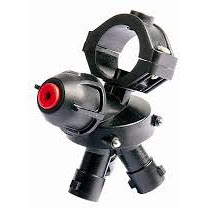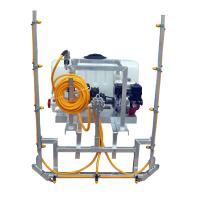Source: http://www.ars.usda.gov
Lowering the risk of spray drift is a top priority for any applicator due to the many problems associated with drift. Ranging from government fines to crop damage, spray drift can be a great liability to applicators if not managed appropriately.
In order to get the most out of your applications this spring, while lowering your potential for spray drift, here are five tips to help you get the most out of your safe spring applications.
- Select the right nozzle for your application

Serving as one of the most important ways to cut down on spray drift, choose the right nozzle based on your application, rate of application and speed. Refer to your spray nozzle’s manufacturer chart to help with the selection.
Most applications this spring, the trend leans toward using a nozzle that produces a larger droplet. For these applications, the larger droplets are favored because they are easier to control and complete coverage isn’t as much of a concern with soil incorporated and preemergence applications.
- Use an appropriate amount of pressure for your nozzle selection
Based on your speed and nozzle selection, you should always stay within the recommended speeds to get the most efficient coverage and to maintain the amount of product sprayed per acre.
- Drive at the speed for which you are calibrated
After selecting the nozzle you want to use and the best pressure for your desired application rate, be aware of your speed. By slowing down or speeding up, you will change the application rate if you don’t adjust your pressure. Pressure that is too high for your setup is just as bad as pressure that is set too low.
To maintain your application rate per acre, you need to increase your pressure if you increase your speed.
- Be aware of boom height

Especially in windy conditions, a boom too high off the soil can contribute to spray drift potential. The higher your booms are set the longer the distance each droplet has to fall, which gives your application more time to travel off path before reaching the desired location.
- Watch for changes in weather
High winds can increase your chances for spray drift, but you should also try to avoid humid conditions as well. Warmer temperatures paired with low humidity levels will cause droplets to evaporate faster and contribute to vapor drift, according to Iowa State University’s article, Spray Drift Potential Increases during Warm Weather Applications.

.png?width=280&name=SameDayShippingGuarantee-New%20(1).png)



